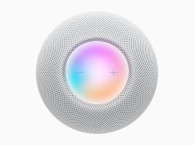
Digital assistants are becoming a central part of everyday life, performing a fundamental role in the interaction between humans and technology, which is creating a multi-billion dollar international industry that is showing no signs of slowing. It is being powered – in part – by advancements in emotional awareness through AI technology.
“Digital assistants are rapidly becoming an essential part of connected devices, introducing an expanding base of users to voice UI across a broad range of vertical markets,” says Dennis Goldenson, SAR Insight & Consulting’s Director, Voice Technologies. “Various industries are now integrating voice technology as a key feature including smartphones, speakers, headphones, televisions, PCs, appliances, automotive, and enterprise.”
According to SAR, 2.2 billion digital assistant-enabled devices will ship in 2017, growing to 3.6 billion in 2022. Amazon, Google, Apple, and Microsoft continue to be the dominant operating systems driving much of the voice UI development. However, other players emerging out of France, Korea, China and other countries are deploying interoperable solutions to support their ecosystems.
Dennis explains that while consumers are gaining confidence interacting with digital assistants, technology providers still have a way to go to entrench the behavior further. Among the findings in the new study, the future of voice will be contextual understanding and emotional response. The next generation of voice will involve simulated conversation and narrative platforms. For voice UI to be mainstream successful, contextual conversations must take place to drive ongoing consumer engagement.
“There is growing consensus on the need to build voice controlled devices that are context aware, can sustain conversation, and detect emotion based on learned behavior,” Dennis says. “This requires AI to respond in a more natural and intuitive (human) way. It’s important that AI is capable of understanding the contextual emotions as well as the semantic message itself. It also has to react appropriately when it comes to the content and the type of reaction. And its reaction has to adhere to learned conventions. Voice controlled smart speakers already react emotionally appropriate in some situations and will continue to advance in deep learning architecture.”
One particular growth area is the automotive sector, where car manufacturers are increasingly integrating voice control systems into their connected cars. “Drivers are becoming more comfortable with the technology as it becomes more reliable,” adds Peter Cooney, Founder SAR Insight. “Automotive manufacturers are integrating more sophisticated MEMS microphone sensor designs, and building more voice-activated systems (with noise suppression features) in their models. They are encouraging users to interact more with their in-car infotainment/entertainment systems while keeping their eyes on the road and hands on the steering wheel. The emphasis on safety with distracted drivers is helping to motivate the use of voice functionality with more urgency.”
Advancements in computing power, memory, cloud-based storage and wireless connectivity are now helping to improve voice recognition and interpret normal language for more skill-based capabilities/tasks. The collaboration with automakers is another illustration of a broader push by technology platform providers to push their versions of digital assistants.

These are some findings from SAR Insight & Consulting’s recently published study on “Digital Assistants Platforms: Use Cases, Technologies, Market Sectors, and Competitive Analysis” which is published as part of its Digital Assistant and Voice Interface Service.
For further information, please email Peter Cooney, Principal Analyst & Director, SAR Insight & Consulting.
www.sarinsight.com






